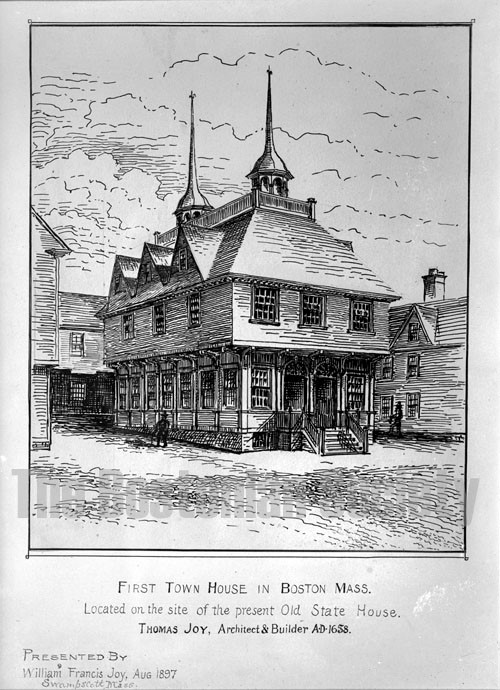206 Washington Street, Downtown Boston
The First Town House opened in 1658. The wood frame building served as Boston’s town hall and the colonial seat of government. The building had a public market on the first floor. It also hosted legislative meetings and receptions by colonial officials and prominent Bostonians. In addition, it housed Boston’s first public library.

On December 25, 1686, Sir Edmund Andros, the royal governor of the Dominion of New England, attended two religious services at First Town House celebrating Christmas. British soldiers flanked Andros as the recently appointed official feared protests by opponents of the Christian holiday. The Puritans saw Christmas as little more than a pagan festival, with origins in the celebration of the winter solstice, dressed up in religious garb. Moreover, Christmas often involved behavior that Massachusetts Puritans perceived as antithetical to respect for Christ’s birth—“rowdy public displays of excessive eating and drinking, the mockery of established authority, aggressive begging (often involving the threat of doing harm), and even the invasion of wealthy homes” in the words of historian Steven Nissenbaum. As the highly influential religious leader Cotton Mather said to his adherents in 1712, “the feast of Christ’s nativity is spent in reveling, dicing, carding, masking, and in all licentious liberty…by mad mirth, by long eating, by hard drinking, by lewd gaming, by rude reveling!”
In 1659, about 27 years prior to Governor Andros’s attendance at the religious ceremonies at First Town House, the Massachusetts Bay Colony criminalized the celebration of Christmas, imposing a five shilling fine on those who violated the law. In 1681, however, Massachusetts rescinded numerous puritanical laws, including the ban on Christmas, in response to political pressure from Britain. Still, through the early decades of the 1800s, businesses and schools in Massachusetts did not close for Christmas, and many churches did not open. It was not until 1856 that Christmas became a public holiday in the state.
A huge fire destroyed the First Town House in 1711. Two years later, the Old State House, which still stands, was built on the site.
Getting there:
MBTA Orange or Blue Line to State station.
To learn more:
Christopher Klein, “When Massachusetts Banned Christmas,” History.com, December 22, 2015.
Steven Nissenbaum, The Battle for Christmas: A Cultural History of America’s Most Cherished Holiday, New York: Vintage Books, 1997.
Hugh Morrison, Early American Architecture from the First Colonial Settlements to the National Period, New York: Oxford University Press (88-89), 1952.
Staff, “When Americans Banned Christmas, The Week, January 8, 2015.

